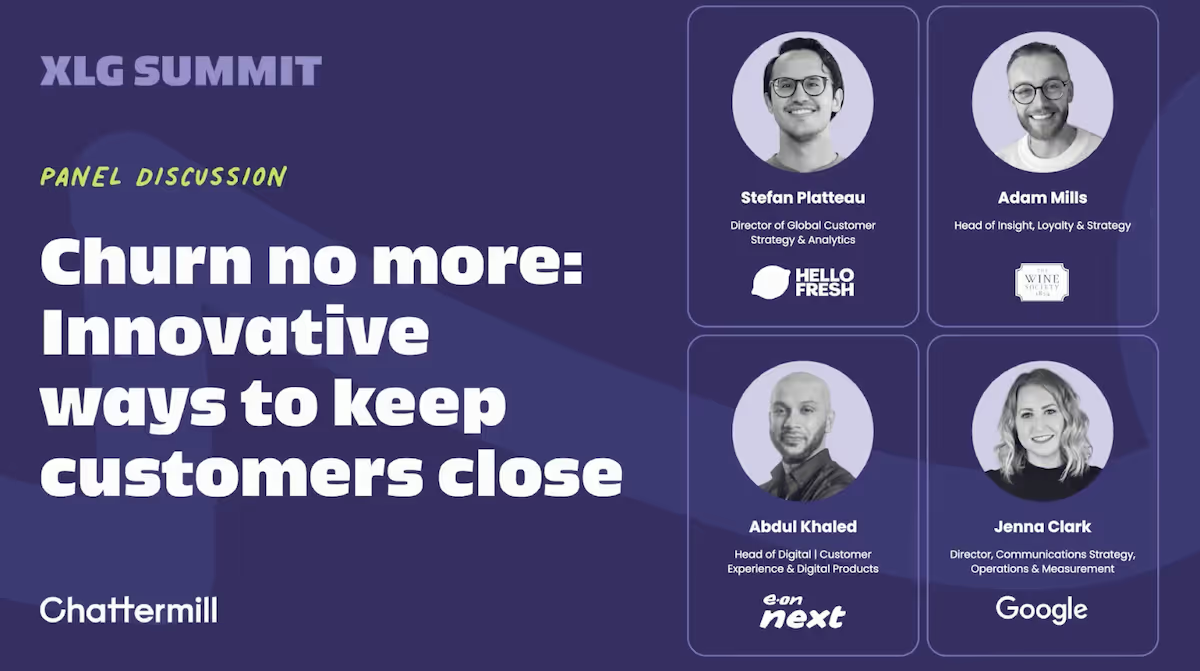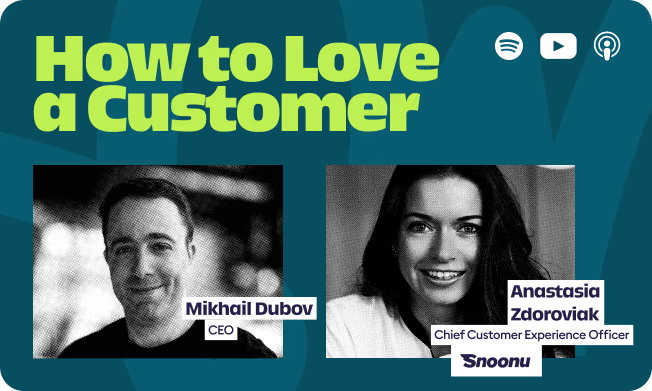In today’s economic climate, customer retention has become more critical than ever.
During a panel discussion at our XLG Summit titled “Churn No More: Innovative Ways to Keep Customers Close”, CX leaders, Stefan Platteau from HelloFresh, Adam Mills from the Wine Society and Abdul Khaled from E.ON Next, shared actionable insights into reducing churn and building long-term loyalty.
Below are key takeaways from the session, supported by expert-backed statistics and real-world examples.
Why Retention Matters More Than Ever
As Stefan Plateau, Director of Customer at HelloFresh, pointed out:
“Once customers churn, it becomes very costly and difficult to lure them back”
With tighter marketing budgets and cautious consumer spending, businesses must focus on maximizing customer lifetime value. Acquisition costs are rising, and consumers are increasingly selective about where they spend, making retention an economic necessity.
Common Drivers of Customer Churn
Abdul Khaled from EonNext highlighted key reasons for churn with research-backed data:
- 67% of churn is due to poor customer service (New Voice Media).
- 66% stems from a lack of perceived value (Accenture), while 41% is due to better pricing elsewhere (PwC).
Abdul emphasized, “It comes down to knowing your customers and their wants and desires as much as you can”
He also noted the importance of proactive service and personalization, which can reduce churn by 40% and boost satisfaction by up to 4 percentage points.
Innovative Retention Strategies
- Proactive Customer Service and Personalization
Personalization is a game-changer. Netflix, for example, tackled churn by using data to track behavior during free trials. By improving content offerings, enhancing their recommendation algorithm, and building an intuitive interface, they turned free-trial users into loyal subscribers.
Stefan summed it up: “Continuous innovation powered by customer data can stave off churn and create loyalty”
- Improving Product Offerings
Stefan also shared HelloFresh’s journey:
“We expanded from 15 recipes per week to 50+ and added customization options to keep customers engaged”. This constant evolution ensures the product stays fresh and relevant for customers.
- Leveraging Data for Personalization
Behavioral data is key to identifying pain points and tailoring offerings. Abdul noted, “It’s important to measure customer feedback across all touchpoints for a 360-degree view”.
NPS and Predictive Tools
While Net Promoter Score (NPS) is a widely used tool for measuring customer satisfaction, the panelists agreed it needs to be paired with behavioral analysis and predictive modeling.Adam Mills of the Wine Society shared their approach:
“We know probably three years before a customer lapses when they’re going to lapse, based on their behavior”
Predictive tools and AI help move beyond static metrics like NPS, enabling businesses to proactively address churn before it happens.
Future Trends in Retention
The panel identified AI-driven personalization as the next frontier in retention. Stefan envisioned:
“Imagine a world where you ask an AI tool to identify retention opportunities and create personalized recommendations without extensive human input”
On evolving customer expectations, Adam noted:
“Customers are putting their money where their mouths are. They’re more brand disloyal and sensitive to value than ever”.
Final Tips for Retention Success
The panel wrapped up with actionable advice for businesses aiming to improve retention in 2024 and beyond:
- Act Quickly: Abdul stressed, “The window of opportunity is gone if you’re too slow”
- Be Customer-Obsessed: Adam emphasized, “Look out the window, know your market, and tailor your offerings to the moment”
- Build Long-Term Foundations: Stefan advised, “Understand retention at the most granular level to differentiate and drive loyalty”
By following these expert strategies, businesses can tackle churn head-on and create experiences that keep customers returning for more. With actionable insights and a focus on personalization, retention truly becomes the new growth frontier.
Here is our free guide on 10 Proven Strategies to reduce customer churn.




.png)











